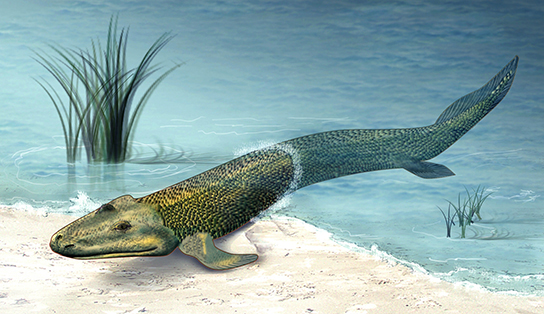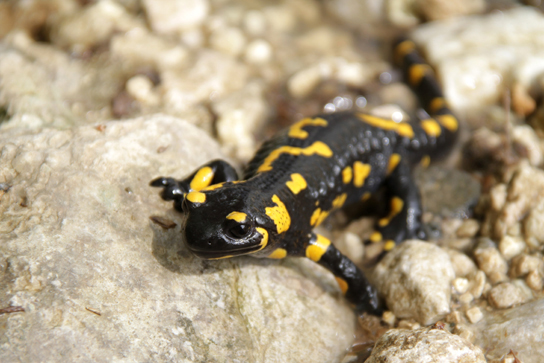| << Chapter < Page | Chapter >> Page > |

The early tetrapods that moved onto land had access to new nutrient sources and relatively few predators. This led to the widespread distribution of tetrapods during the early Carboniferous period, a period sometimes called the “age of the amphibians.”
Amphibia comprises an estimated 6,770 extant species that inhabit tropical and temperate regions around the world. Amphibians can be divided into three clades: Urodela (“tailed-ones”), the salamanders; Anura (“tail-less ones”), the frogs; and Apoda (“legless ones”), the caecilians.
Salamanders are amphibians that belong to the order Urodela. Living salamanders ( [link] ) include approximately 620 species, some of which are aquatic, other terrestrial, and some that live on land only as adults. Adult salamanders usually have a generalized tetrapod body plan with four limbs and a tail. They move by bending their bodies from side to side, called lateral undulation, in a fish-like manner while “walking” their arms and legs fore and aft. It is thought that their gait is similar to that used by early tetrapods. Respiration differs among different species. The majority of salamanders are lungless, and respiration occurs through the skin or through external gills. Some terrestrial salamanders have primitive lungs; a few species have both gills and lungs.
Unlike frogs, virtually all salamanders rely on internal fertilization of the eggs. The only male amphibians that possess copulatory structures are the caecilians, so fertilization among salamanders typically involves an elaborate and often prolonged courtship. Such a courtship allows the successful transfer of sperm from male to female via a spermatophore. Development in many of the most highly evolved salamanders, which are fully terrestrial, occurs during a prolonged egg stage, with the eggs guarded by the mother. During this time, the gilled larval stage is found only within the egg capsule, with the gills being resorbed, and metamorphosis being completed, before hatching. Hatchlings thus resemble tiny adults.

View River Monsters: Fish With Arms and Hands? to see a video about an unusually large salamander species.
Frogs are amphibians that belong to the order Anura ( [link] ). Anurans are among the most diverse groups of vertebrates, with approximately 5,965 species that occur on all of the continents except Antarctica. Anurans have a body plan that is more specialized for movement. Adult frogs use their hind limbs to jump on land. Frogs have a number of modifications that allow them to avoid predators, including skin that acts as camouflage. Many species of frogs and salamanders also release defensive chemicals from glands in the skin that are poisonous to predators.

Notification Switch
Would you like to follow the 'Biology' conversation and receive update notifications?